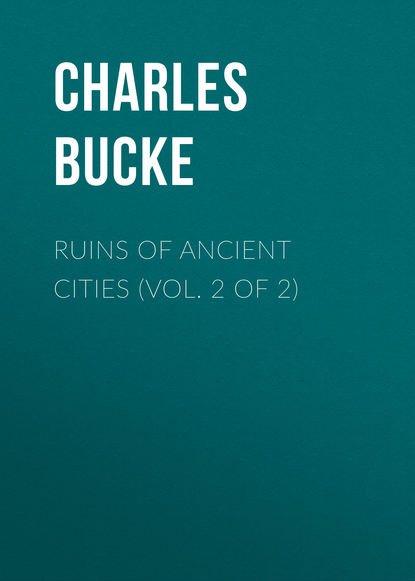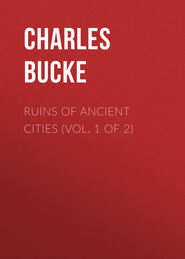По всем вопросам обращайтесь на: info@litportal.ru
(©) 2003-2024.
✖
Ruins of Ancient Cities (Vol. 2 of 2)
Настройки чтения
Размер шрифта
Высота строк
Поля
47
Eustace.
48
Plin. xxx. c. 3.
49
Pliny; Swinburne; Eustace; Wilkinson.
50
The persons who visited Palmyra in 1678, found in the neighbourhood “a garden, full of palm-trees;” but when Mr. Wood was there, not a single one remained. “The name of Palmyra,” says Mr. Addison, “is supposed by some to have been derived from the word Palma, indicative of the number of palm-trees that grew here; but that name was given by the Greeks, and, although Palma signifies palm-tree in the Latin, yet in the Greek tongue it has a very different signification. Neither does Tadmor signify palm-tree in the Syrian language, nor in the Arabic; nor does Thadamoura, as the place is called by Josephus, signify palm-tree in the Hebrew. Neither do palms thrive in Syria, as the climate is too severe for them in the winter.”
51
1 Kings, ix. 18. 2 Chron. viii. 4.
52
It is a well known and very true observation, that is made by Ammianus Marcellinus (lib. xiv.), that the Greek and Roman names of places never took among the natives of Syria; which is the reason why most places retain their first and original names at this day. – Whiston.
53
Wood.
54
Ch. ix. ver. 18.
55
Ch. x. v. 14
56
He was of mean parentage, according to Orosius. Zonaras calls him “a man of Palmyra;” and Agathias speaks of him as a person entirely unknown, till he made his name illustrious by his actions. Sextus Rufus, however, calls him by an epithet implying that he was a senator.
57
Though history nowhere gives the first name of Zenobia, we learn from coins, that it was Septimia.
58
She is thus described: – Her complexion was a dark brown; she had black sparkling eyes, of uncommon fire; her countenance was divinely sprightly; and her person graceful and genteel beyond imagination; her teeth were white as pearls, and her voice clear and strong. If we add to this an uncommon strength, and consider her excessive military fatigues; for she used no carriage, generally rode, and often marched on foot three or four miles with her army; and if we, at the same time, suppose her haranguing her troops, which she used to do in her helmet, and often with her arms bare, it will give us an idea of that severe character of masculine beauty, which puts one more in mind of Minerva than of Venus.
59
There are several meanings to this word: – Balista implying a cross-bow, a sling, or an engine to shoot darts or stones.
60
“Her manly understanding,” says Gibbon, “was strengthened and adorned by study. She was not ignorant of the Latin tongue, but possessed, in equal perfection, the Greek, the Syriac, and the Egyptian languages. She had drawn up, for her own use, an epitome of oriental history, and familiarly compared the beauties of Homer and Plato, under the tuition of the sublime Longinus.”
61
Anon.
62
“The emperor afterwards presented Zenobia with an elegant villa at Tibur, or Tivoli, about twenty miles from the capital; where, in happy tranquillity, she fed the greatness of her soul with the noble images of Homer, and the exalted precepts of Plato; supported the adversity of her fortunes with fortitude and resignation; and learned that the anxieties, attendant on ambition, are happily exchanged for the enjoyments of ease, and the comforts of philosophy. The Syrian queen sank into a Roman matron; her daughters married into noble families; and her race was not yet extinct in the fifth century.” – Gibbon.
63
Addison.
64
Yet Bruce says: – “Palmyra is nowhere covered with sand or rubbish as in other ruins. The desert that surrounds it is rather gravel than sand, and is, therefore, not easily moved. Her mountains are perfectly bare, and produce nothing.”
65
This Emir lived upon rapine; being followed by a considerable number of men, who not only hated labour, but disliked equally to live under any settled government.
66
Philosophical Transactions.
67
This was the custom also in the days of Ezekiel. See ch. xxiii. 40.
68
In Mr. Wood’s well-known, though exceedingly scarce work, the ruins are represented in fifty-seven copper-plates, sixteen inches by twelve inches, printed on imperial paper; they are finely executed, the drawing is correct and masterly, and the engraving highly finished. The Palmyrene and Greek inscriptions on the funeral monuments, and other buildings, are copied; and besides picturesque views of the ruins, from several points of sight, the plans are generally laid down, and the several parts of the columns, doors, windows, pediments, ceilings and bas-reliefs, are delineated, with a scale by which they may be measured and compared.
69
“In this plain,” says Mr. Halifax, “you see a large valley of salt, affording great quantities thereof, and lying about an hour’s distance from the city: and this, more probably, is the valley of salt, mentioned in 2 Sam. 8-13, where David smote the Syrians, and slew one hundred and eighty thousand men; than another, which lies but four hours from Aleppo, and has sometimes passed for it.”
70
[70] (#FNanchor_70_70) “Istakar,” says Abulfeda, quoted by Sir William Ouseley, “is one of the most ancient cities in Persia, and was formerly the royal residence: it contains vestiges of buildings so stupendous, that, like Tadmor, and Balbec, they are said to be the work of supernatural beings.”
71
A city in Persia.






